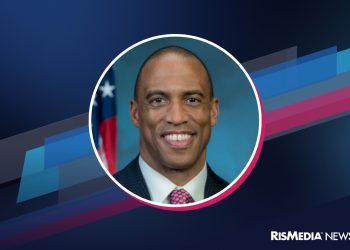RISMEDIA, Jan. 23, 2008-(NYTimes.com)-The Federal Reserve, responding to an international stock sell-off and fears about a possible United States recession, cut its benchmark interest rate by three-quarters of a percentage point on Tuesday.
The Federal Open Market Committee lowered its target for the federal funds rate on overnight loans between banks to 3.5%, from 4.25%. The move was unusual both in its scale and its timing: In recent years, the Fed has only rarely acted between scheduled meetings of the committee, and almost always in increments of one-quarter or one-half point. It was the biggest single cut since October 1984.
In a statement, the Fed said: “The committee took this action in view of a weakening of the economic outlook and increasing downside risks to growth. While strains in short-term funding markets have eased somewhat, broader financial market conditions have continued to deteriorate and credit has tightened further for some businesses and households.”
“Moreover,” the statement continued, “incoming information indicates a deepening of the housing contraction as well as some softening in labor markets.”
“We’re very excited about the lowering of the Fed rate,” says Lennox Scott, CEO of John L. Scott Real Estate. “This will lead to strengthening the US economy, which is a foundation for strong home sales. To have this type of support from the Fed and for them to recognize and support the economy-it bodes well for residential real estate.”
What’s more, says Scott, is that interest rates are now below where they were back in August when turbulence hit the mortgage market.
“With the Fed’s actions, we will have a good to strong economy. Sellers have now adjusted their prices and it’s the beginning phase of the next real estate cycle,” says Scott.
Looking into the future and towards the next phase in real estate, Scott says all signals are pointing towards a healthy housing outlook.
“The FHA Modernization Bill was passed by the House and Senate, and is currently in with the conferencing committee, so with that on the horizon, it’s good for first time buyers and homeownership,” says Scott. “NAR is also very involved in talking with members of Congress and the White House about raising the GSE loan limits. I believe we have even more good news ahead. Rates are already fantastic and it’s the optimum buy zone – the beginning of the next real estate cycle.”
In a related action, the Fed approved a 75 basis-point decrease in the discount rate, to 4%.
Stock futures improved briefly after the Fed’s announcement but then fell back and indicated a sharp drop when markets open on Tuesday after a three-day weekend. The futures markets are also anticipating at least an additional quarter-point rate cut next week at the Fed’s regular meeting.
The Fed action was a stark indication that it is concerned about a possible recession. “Appreciable downside risks to growth remain,” the Fed said in its statement.
Treasury Secretary Henry Paulson, speaking to the United States Chamber of Commerce, said Tuesday that the administration and Congress needed to agree quickly on a program to stimulate the domestic economy as global markets plunge on fears the United States is heading into recession.
“Time is of the essence and the president stands ready to work on a bipartisan basis to enact economic growth legislation as soon as possible,” Paulson said.
He spoke as legislative leaders prepared to meet at the White House to discuss a stimulus bill.
Paulson said he was optimistic that the administration and legislators could find a bipartisan “common ground” on the economic package and “get this done before winter turns into spring.”
He also said he hoped to do something in the next couple of weeks “that will make a difference this year.”
The Treasury Department, he said, was focusing on the way home mortgages are originated and traded and said the department is developing a new regulatory framework for subprime and jumbo mortgages where he said markets were not functioning well.
For more of today’s headlines, see:










